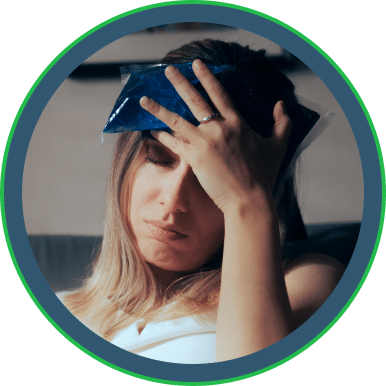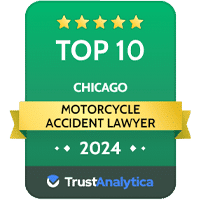
Yes, you can get a concussion without hitting your head. In fact, can you get a concussion without hitting your head? Concussions can result from rapid movement or violent shaking that causes the brain to move within the skull. This often happens in incidents like car accidents, whiplash, or physical abuse. In this article, we’ll explore how these non-impact concussions occur, their symptoms, and how to manage and prevent them.
Key Takeaways
- Concussions can occur without direct head impact due to rapid brain movement, often resulting from whiplash, car accidents, or violent motions.
- Recognizing concussion symptoms is crucial as they can be subtle and develop days after injury, and severe symptoms require immediate medical attention.
- Preventive measures such as wearing protective gear, using seat belts, and educating about risks are essential to reduce the incidence of non-impact concussions.
Your search for help ends here. Let’s get started, for FREE.
Concussions Without Direct Head Impact
Concussions can occur without the stereotypical blow to the head. These brain injuries, known as non-impact concussions, can result from various incidents such as whiplash, forceful movements, or being in a blast zone. The brain’s rapid movement within the skull during these events can cause significant head injuries.
Knowing how these concussions occur is essential for accurate diagnosis and treatment. For instance, a violent blow to the neck or upper body can jolt the brain inside the skull, leading to a concussion without any direct head contact. Identifying these causes aids in managing concussions more effectively.
Awareness is key, as non-impact concussions can be easily overlooked, resulting in improper care and prolonged recovery. By knowing the diverse ways these injuries can occur, we can better protect ourselves and others from their potentially severe consequences.
Mechanisms Behind Non-Impact Concussions
The mechanisms behind non-impact concussions are as intriguing as they are complex. During a concussion, the brain may briefly change shape within the skull, sliding back and forth against the inner walls. This movement can cause bruising and damage to blood vessels, leading to a traumatic brain injury without direct head contact.
For example, in car crashes, the sudden jolt from rapid deceleration can cause the brain cells to move abruptly, resulting in a concussion. Physical trauma elsewhere in the body, such as a violent blow to the upper body, can also lead to the brain moving quickly within the skull, causing a similar injury.
This brain movement is a primary cause of non-impact concussions, emphasizing the need for greater awareness and understanding. By recognizing the various forces that can lead to brain injuries, we can better prevent and manage these serious conditions.
Common Scenarios Leading to Non-Impact Concussions
Non-impact concussions can occur in various scenarios, from car accidents to sports injuries and physical abuse. Each situation presents unique risks and challenges, underscoring the need for vigilance and proper care, especially when a concussion occurs.
Car Accidents
Car accidents are a common cause of non-impact concussions. The rapid deceleration experienced during a crash can cause the brain to move abruptly within the skull, leading to injury. Whiplash injuries, which commonly occur in car accidents, can also result in concussions from the jostling effect on the brain.
Grasping these mechanisms is key to preventing and managing concussions from car accidents. By recognizing the risks and taking appropriate safety measures, such as wearing seat belts and using properly adjusted headrests, we can reduce the likelihood of these injuries.
Physical Abuse
Physical abuse, such as violent shaking, can lead to traumatic brain injuries. Shaken baby syndrome, for example, results from the violent shaking of an infant, leading to severe brain injuries similar to concussions.
Comprehending the impact of physical abuse on brain function is vital for prevention and intervention. By recognizing the signs and educating others on the dangers of physical abuse, we can better protect vulnerable populations, particularly children, from these devastating injuries.
Sports Injuries
Sports injuries are another significant cause of non-impact concussions. Concussions in sports often arise from body collisions or falls, not just from direct hits to the head. Athletes in contact sports like football and hockey frequently experience concussions due to the high-impact nature of these activities.
For instance, approximately 20% of high school athletes in contact sports sustain concussions. These injuries can have long-term effects on brain health, underscoring the need for proper safety measures and concussion protocols in sports.
Recognizing the risks and implementing safety measures, like wearing protective gear and following game rules, can reduce the incidence of concussions in sports and safeguard athletes’ long-term health.
Suffered a Traumatic Brain Injury?
Recognizing Concussion Symptoms
Identifying concussion symptoms is vital for timely and effective treatment. Common symptoms include confusion, balance issues, and mood changes, which can occur without direct head trauma. These symptoms may be subtle and easily overlooked, making it crucial to be vigilant after any incident that could cause a mild concussion.
Non-impact concussions can occur in various scenarios, such as falls, car accidents, or physical altercations. Knowing these symptoms and their potential causes aids in identifying and managing concussions more effectively.
Delayed Onset of Symptoms
Some individuals may not experience concussion symptoms until days after the injury. Rapid brain movement can lead to metabolic changes that impair brain function, causing symptoms to appear later.
Keeping track of post-concussion symptoms is essential, as some medications can mask symptoms and increase bleeding risks. It is recommended to avoid aspirin and NSAIDs soon after a concussion and use acetaminophen for pain management instead.
Severe Symptoms Requiring Immediate Medical Attention
Severe symptoms like repeated vomiting, confusion, and seizures indicate a serious brain injury and require urgent medical care. Second Impact Syndrome is a life-threatening condition that occurs when an individual suffers a new concussion before fully recovering from a previous one.
Patients with Second Impact Syndrome may experience rapid cognitive decline and lose consciousness following the second impact. Prompt medical care can prevent complications like Second Impact Syndrome and ensure proper treatment for severe concussion symptoms.
Risk Factors for Non-Impact Concussions
Certain risk factors increase the likelihood of non-impact concussions. Having a history of concussions significantly raises the risk for future concussive events. Females are generally more vulnerable to sustaining concussions compared to their male counterparts.
Younger athletes, particularly those in high school sports, tend to report concussions more frequently than collegiate athletes. Identifying these risk factors helps in taking preventive measures and providing proper care for those at higher risk.
Complications from Non-Impact Concussions
Non-impact concussions can lead to various complications, including Post-Concussion Syndrome, which is characterized by prolonged symptoms lasting months or longer. Repeated concussions can result in permanent brain damage and significant disabilities.
Second Impact Syndrome occurs when an individual with a recent concussion sustains a second impact that leads to dangerous brain swelling. Injuries from non-impact concussions can disrupt ion balance, causing cellular dysfunction and worsening overall brain damage.
Knowing these complications is essential for proper management and prevention. Recognizing the potential long-term effects allows us to take necessary precautions and seek appropriate medical care.
Treatment and Recovery for Non-Impact Concussions
Treatment and recovery for non-impact concussions should be personalized and overseen by a healthcare professional experienced in concussion care. A typical concussion recovery plan includes a gradual return to activities as symptoms improve.
Collaboration among healthcare providers, athletic trainers, school staff, rehabilitation specialists, and parents is vital to follow the concussion protocol. The recovery process consists of three phases: acute symptomatic, recovery.
Role of Physical Therapy
Physical therapy can enhance recovery by targeting balance and cognitive functions affected by a concussion. Specific exercises and activities designed by a healthcare professional can significantly aid in the rehabilitation process.
Managing Post Traumatic Headaches
Managing post-traumatic headaches is crucial for a smooth recovery. Medications like aspirin and NSAIDs should be avoided soon after a concussion due to the risk of increased bleeding. Acetaminophen is recommended as a safer alternative for pain management.
Preventing Non-Impact Concussions
Preventing non-impact concussions involves wearing protective gear, using seat belts, and following safety protocols in sports. Educating individuals, especially children, on the dangers of physical abuse can also help mitigate the risk of non-impact concussions.
Implementing these preventive measures can reduce the likelihood of concussions and protect brain health without hitting your head.
Frequently Asked Questions
Can you get a concussion without hitting your head?
Yes, concussions can occur without a direct hit to the head due to sudden acceleration or deceleration that causes the brain to move rapidly within the skull.
What are the common symptoms of a concussion?
Common symptoms of a concussion include confusion, balance issues, mood changes, and potentially severe symptoms like repeated vomiting or seizures. It’s important to seek medical attention if these symptoms appear.
How can car accidents cause non-impact concussions?
Car accidents can cause non-impact concussions due to rapid deceleration and whiplash, which force the brain to move violently within the skull. This motion can result in the brain experiencing trauma without direct contact to the head.
What should I avoid after a concussion?
After a concussion, it is crucial to avoid aspirin and NSAIDs due to their potential to increase bleeding risks; instead, opt for acetaminophen for pain management. This precaution can help ensure a safer recovery.
What are some prevention strategies for non-impact concussions?
To prevent non-impact concussions, wearing protective gear, using seat belts, and adhering to safety protocols in sports are essential strategies. Additionally, educating individuals about the risks of physical abuse can further enhance safety.












